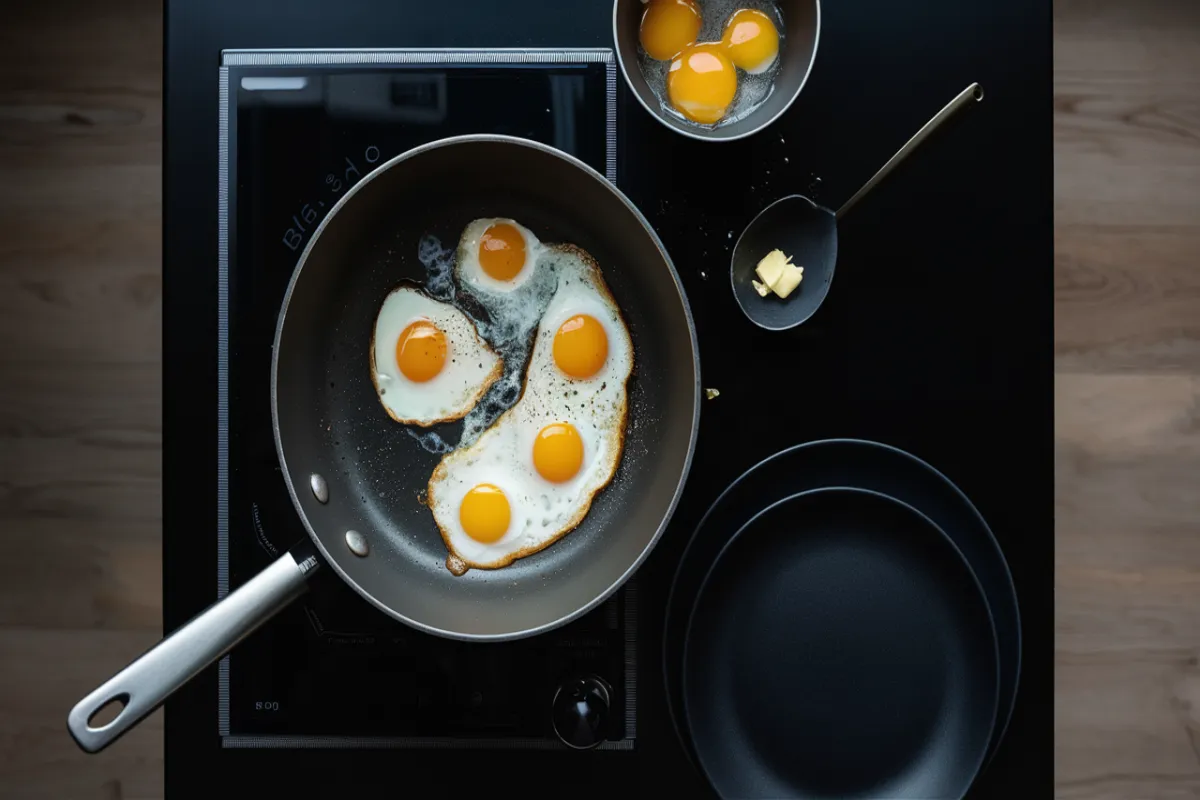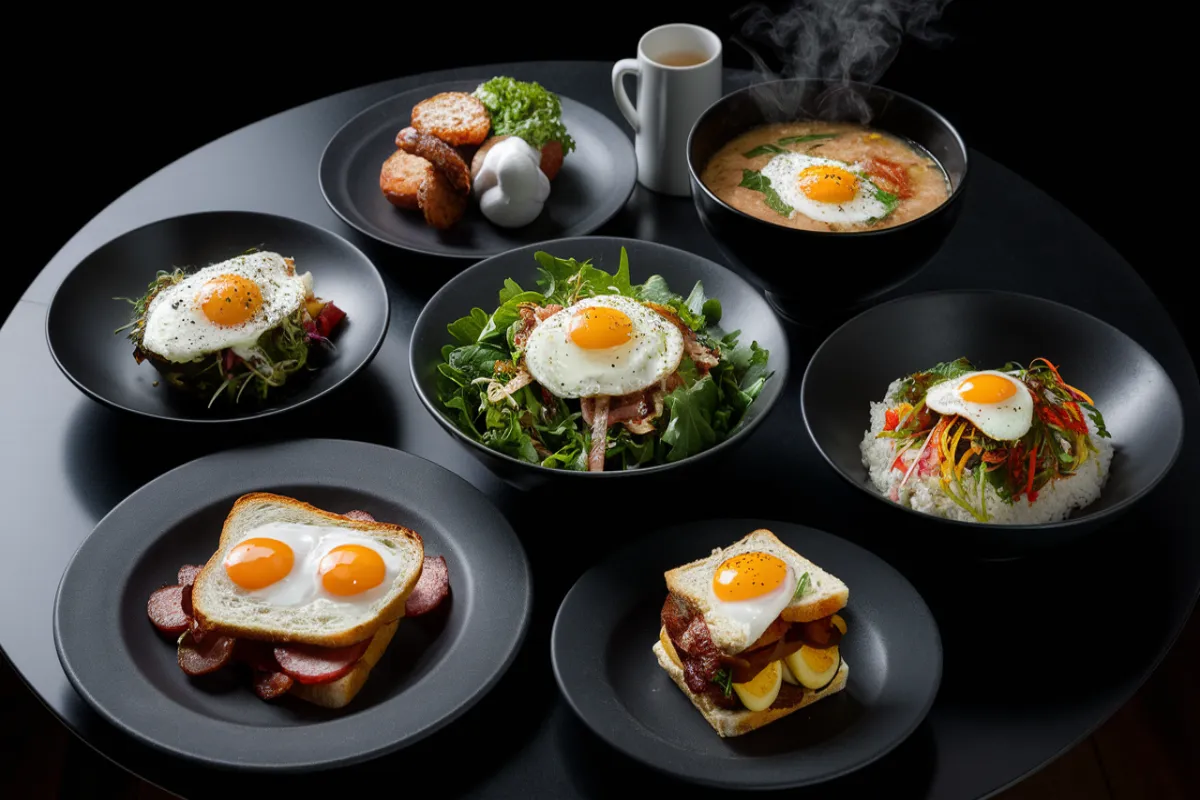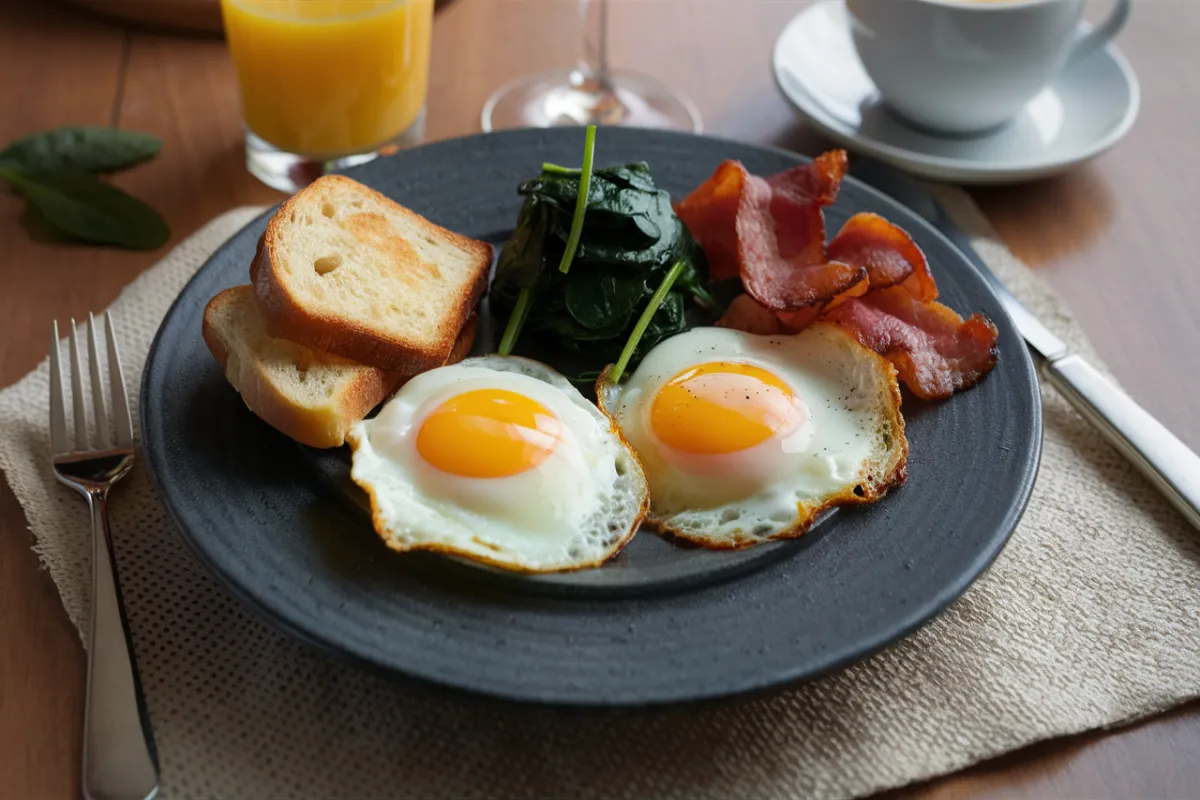Sunny side up eggs are a breakfast staple that many people love. They are simple to make, yet they have a unique texture and flavor that sets them apart from other egg styles. But what exactly is a sunny side up egg, and how can you achieve the perfect one every time? This article will guide you through everything you need to know about sunny side up eggs, from preparation to serving. By the end, you’ll be able to make and enjoy this classic egg dish with confidence.
1. Understanding Sunny Side Up Eggs
1.1 Definition of a Sunny Side Up Egg
A sunny side up egg is a fried egg that is cooked on one side only. The yolk remains runny, while the whites are just set. The name “sunny side up” comes from the appearance of the yolk, which looks like a bright sun against the white background. This egg style is known for its simplicity and the delicious contrast between the firm whites and the liquid yolk.
1.2 The Appeal of Sunny Side Up Eggs
Sunny side up eggs are popular because they offer a unique combination of textures and flavors. The whites provide a firm base, while the yolk adds richness and creaminess. This contrast makes sunny side up eggs versatile and enjoyable in various dishes. Whether you’re dipping toast into the yolk or adding the egg to a meal, the experience is always satisfying.
1.3 Comparing to Other Egg Styles
While sunny side up eggs are similar to other fried egg styles, they have distinct differences. Unlike over easy or over medium eggs, sunny side up eggs are not flipped. This method keeps the yolk fully runny and the whites tender. The result is an egg that has a different mouthfeel and flavor compared to eggs cooked on both sides.
2. How to Cook the Perfect Sunny Side Up Egg

2.1 Choosing the Right Pan
Selecting the right pan is essential for making sunny side up eggs. A non-stick pan is the best choice because it allows the eggs to cook evenly without sticking. The size of the pan should match the number of eggs you’re cooking. A smaller pan is ideal for one or two eggs, while a larger pan works better for multiple eggs. Choosing the right pan helps achieve the desired texture.
2.2 Preparing the Pan
Before cooking, preheat the pan over low to medium heat. Add a small amount of butter or oil to the pan. The fat prevents the eggs from sticking and adds flavor. Ensure the pan is hot but not smoking before adding the eggs. This preparation step is crucial for cooking the eggs evenly.
2.3 Cracking the Eggs
Crack the eggs into a bowl first to ensure the yolks remain intact. Then, gently pour the eggs into the preheated pan. The eggs should spread out evenly in the pan without overlapping. Be careful not to break the yolks during this process. Handling the eggs carefully at this stage sets the foundation for perfect sunny side up eggs.
2.4 Cooking the Whites
Let the eggs cook undisturbed until the whites are fully set. This process usually takes about three to four minutes. The key is to cook the whites slowly, so they remain tender and avoid browning. If the whites cook too quickly, lower the heat. Proper cooking ensures the whites are set while the yolk stays runny.
2.5 Avoiding Overcooking
Overcooking can cause the whites to become tough and rubbery. To avoid this, keep a close eye on the eggs as they cook. Remove the eggs from the heat as soon as the whites are set. This timing helps maintain the tender texture that is characteristic of sunny side up eggs.
2.6 Serving the Eggs
Once the eggs are cooked, carefully slide them onto a plate. The yolk should remain visible and liquid. Serve the eggs immediately to enjoy the full flavor and texture. Sunny side up eggs are best enjoyed fresh, with their yolks still warm and runny.
3. Common Mistakes to Avoid
3.1 Using High Heat
One of the most common mistakes is using high heat. High heat can cause the eggs to cook too quickly, leading to overcooked whites and undercooked yolks. For sunny side up eggs, use medium to low heat. This method allows the eggs to cook evenly and prevents burning.
3.2 Breaking the Yolk
Breaking the yolk is a common frustration. To avoid this, be gentle when cracking and pouring the eggs into the pan. Using a non-stick pan and a good spatula can also help keep the yolk intact. Careful handling ensures the eggs retain their desired texture.
3.3 Overcooking the Whites
Overcooked whites become tough and unpleasant to eat. Watch the eggs closely and remove them from the heat as soon as the whites are set. Low and slow cooking helps prevent overcooking and maintains a tender texture.
3.4 Moving the Eggs Too Much
Moving the eggs too much during cooking can cause the whites to spread unevenly or the yolk to break. Let the eggs cook undisturbed until the whites are fully set. This method ensures even cooking and preserves the integrity of the yolk.
3.5 Using an Inadequate Pan
Using a pan that is too large or not non-stick can lead to uneven cooking or sticking. Choose a pan that fits the number of eggs you’re cooking and provides a non-stick surface. The right pan is essential for achieving perfect sunny side up eggs.
4. Culinary Applications of Sunny Side Up Eggs

4.1 Breakfast Dishes
Sunny side up eggs are a classic addition to many breakfast dishes. Serve them over toast, with bacon and sausage, or as part of a traditional English breakfast. The runny yolk adds richness and flavor, enhancing the overall meal. Sunny side up eggs are also great with hash browns or pancakes for a complete breakfast.
4.2 Topping for Salads
Adding a sunny side up egg to a salad can elevate the dish. The runny yolk acts as a natural dressing, adding richness to the greens. Pair the egg with ingredients like arugula, bacon, and a tangy vinaigrette. The creamy yolk balances the flavors, making the salad more satisfying.
4.3 Garnish for Soups and Stews
Sunny side up eggs can also be used as a garnish for soups and stews. The yolk adds a rich, creamy element that enhances the broth. Add the egg just before serving to keep the yolk intact. This technique works well with dishes like ramen or tomato soup, where the egg adds both flavor and visual appeal.
4.4 Served Over Rice or Grains
In many Asian cuisines, sunny side up eggs are served over rice or grains. The runny yolk mixes with the rice, creating a delicious sauce. This combination is often found in dishes like bibimbap or nasi goreng. The egg adds protein and richness, making the dish more filling and flavorful.
4.5 In Sandwiches and Burgers
Sunny side up eggs can add a gourmet touch to sandwiches and burgers. The runny yolk adds a rich, creamy element that complements the meat and other toppings. Pair the egg with ingredients like bacon, avocado, or cheese for a satisfying meal. The combination of textures and flavors creates a delicious and unique sandwich.
5. Variations and Enhancements
5.1 Adding Spices and Herbs
Enhance the flavor of your sunny side up eggs by adding spices and herbs. Sprinkle fresh herbs like chives, parsley, or cilantro over the eggs just before serving. Adding spices like paprika, black pepper, or chili flakes can also add a kick. Experimenting with different seasonings can elevate your eggs to a new level.
5.2 Using Different Cooking Fats
The fat you use for cooking can affect the flavor of the eggs. Butter adds a rich, creamy taste, while olive oil offers a lighter, fruitier flavor. Coconut oil can add a hint of sweetness. Experiment with different fats to see which one you prefer. Each fat type brings a unique flavor and texture to the eggs.
5.3 Incorporating Cheese
Adding cheese to sunny side up eggs creates a rich and savory dish. Sprinkle grated cheese over the eggs just before they finish cooking. The cheese will melt slightly, adding a gooey, delicious layer to the eggs. Choose from options like cheddar, mozzarella, or feta for different flavors. Cheese enhances the creamy texture of the yolk and adds a savory element to the dish.
5.4 Serving with Sauces
Serving eggs with sauces can add a new dimension to the dish. Try drizzling the eggs with hot sauce, hollandaise, or balsamic vinegar. Each sauce adds its unique flavor, complementing the richness of the yolk. Experimenting with different sauces can create exciting flavor combinations.
5.5 Exploring International Variations
Different cultures have their own variations of fried eggs. In Japan, tamago gohan features a raw egg mixed with hot rice. In Spain, huevos rotos combines fried eggs with potatoes . Exploring these variations can inspire new ways to enjoy sunny side up eggs.
6. Frequently Asked Questions About Sunny Side Up Eggs
6.1 How Long Does It Take to Cook Sunny Side Up Eggs?
Cooking sunny side up eggs typically takes about three to four minutes. The exact time depends on the heat and egg size. Cook the eggs until the whites are fully set and the yolk remains runny. Timing is crucial to achieving the perfect texture.
6.2 Can I Make Sunny Side Up Eggs in the Microwave?
Yes, you can make sunny side up eggs in the microwave, but achieving the right texture can be challenging. The microwave tends to cook eggs unevenly, making it hard to control the doneness of the yolk. If you choose to use the microwave, cook the eggs on low power and check them frequently. However, using a stovetop and a non-stick pan is the best method for making perfect sunny side up eggs.
6.3 What’s the Difference Between Sunny Side Up and Over Easy Eggs?
The difference lies in the cooking method. Sunny side up eggs are cooked on one side only, with a runny yolk. Over easy eggs are flipped and cooked briefly on the other side, resulting in a yolk that is slightly thickened but still runny. The choice between these styles depends on your preference for yolk texture.
6.4 Can I Add Vegetables to Sunny Side Up Eggs?
Yes, adding vegetables can enhance the flavor and nutrition of your eggs. For sunny side up eggs, serve the eggs over a bed of sautéed vegetables. Vegetables like spinach, tomatoes, or mushrooms pair well with the richness of the yolk. Adding vegetables creates a more balanced meal.
6.5 How Do I Prevent the Yolks from Breaking?
To prevent the yolks from breaking, be gentle when cracking the eggs and pouring them into the pan. Use a non-stick pan and a good spatula to handle the eggs carefully. Avoid moving the eggs too much during cooking. Proper handling ensures the yolks remain intact.
Conclusion
Mastering the art of cooking sunny side up eggs requires attention to detail, the right tools, and a bit of practice. By understanding the specific characteristics of sunny side up eggs, you can enjoy their perfect balance of textures. Whether you’re serving them over toast, in a salad, or as a garnish for soups, sunny side up eggs offer a delicious and versatile option for any meal. Follow the tips and techniques outlined in this guide to achieve the perfect sunny side up egg every time.
Learn why paying attention to detail can enhance your career success

